
Perched atop a hill in the Kathmandu Valley, Swayambhunath, also known as the Monkey Temple, is one of Nepal's most revered religious sites. A UNESCO World Heritage Site, it is a symbol of harmony between Hinduism and Buddhism, reflecting the rich cultural tapestry of Nepal. This article delves into the history, cultural significance, and practical information for visiting this iconic stupa.
Swayambhunath's origins date back to the 5th century, making it one of the oldest religious sites in Nepal. According to legend, the valley was once a vast lake, and the hill where Swayambhunath stands emerged from the waters when the Bodhisattva Manjushri sliced a gorge at Chovar, draining the lake. The name Swayambhunath means "self-existent one," highlighting its ancient and divine origins. Over the centuries, the stupa has been renovated and restored, reflecting the architectural influences of different eras.
Swayambhunath is located about 2 kilometers west of Kathmandu's city center, atop a hill that offers stunning panoramic views of the Kathmandu Valley. The hill is accessible via a long flight of stone steps leading up from the eastern side or a more gradual path from the western side. Its proximity to Kathmandu makes it a convenient and popular destination for both tourists and locals.
Swayambhunath holds immense cultural and spiritual value for both Buddhists and Hindus. The stupa is adorned with a pair of all-seeing eyes of Buddha, symbolizing wisdom and compassion. The site is surrounded by a complex of shrines and temples, some dating back to the Licchavi period. The blend of Hindu and Buddhist symbolism and architecture at Swayambhunath illustrates the unique religious syncretism in Nepal, where both religions are often practiced harmoniously.
Swayambhunath is the focal point of several important festivals throughout the year. Buddha Jayanti, celebrating the birth, enlightenment, and death of Buddha, draws large crowds who perform rituals and offer prayers. During the Tibetan New Year (Losar), the stupa is adorned with prayer flags, and devotees gather to celebrate with traditional music and dance. Another significant event is the Gunla festival, marking the sacred Buddhist month of Gunla, during which devotees make pilgrimages to Swayambhunath to offer prayers and music.
Swayambhunath is conveniently located approximately 8 kilometers from Tribhuvan International Airport, the main international gateway to Nepal. The journey from the airport to the stupa typically takes around 20-30 minutes by car, depending on traffic conditions, making it easily accessible for visitors arriving in Kathmandu.
The best time to visit Shyambhunath is either early morning or in the Evening. Early morning you can view entire Kathmandu valleys clear view. In the evening you can view beautiful Kathmandu valley decorated with lights.Early mornings and late afternoons are ideal for visiting to avoid the midday heat and crowds too.
Swayambhunath is colloquially known as the Monkey Temple due to the large population of rhesus macaques that inhabit the area. These monkeys are considered holy and are an integral part of the temple's charm. Visitors can observe them frolicking around the stupa, adding a lively and playful element to the sacred site. However, it's advisable to keep a respectful distance and secure personal belongings, as the monkeys can be quite inquisitive.
Swayambhunath's significance as a place of worship for both Buddhists and Hindus highlights the deep cultural and religious integration in Nepal. For Buddhists, it is one of the most sacred stupas, representing Buddha's mind and enlightenment. The stupa's dome symbolizes the world, and the 13 pinnacles atop it represent the stages to enlightenment. Hindus also revere Swayambhunath, associating it with the deity Saraswati and incorporating it into their religious practices. This dual veneration is a testament to Nepal's unique tradition of religious harmony and coexistence.
Swayambhunath stands as a beacon of spirituality and cultural heritage in the Kathmandu Valley. Its historical depth, religious significance, and breathtaking views make it a must-visit destination for anyone exploring Nepal. Whether you're drawn by its sacred aura, its historical intrigue, or the playful presence of the resident monkeys, Swayambhunath offers an enriching and unforgettable experience. Plan your visit to this remarkable site and immerse yourself in the rich tapestry of Nepalese culture and spirituality.
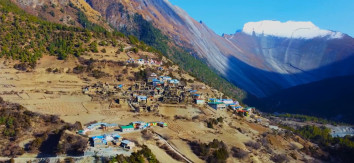 Discover Pisang Village, a scenic stop on the Annapurna Circuit Trek. Experience stunning Himalayan views, local culture, and peaceful mountain charm in Nepal's Manang District.
Discover Pisang Village, a scenic stop on the Annapurna Circuit Trek. Experience stunning Himalayan views, local culture, and peaceful mountain charm in Nepal's Manang District.
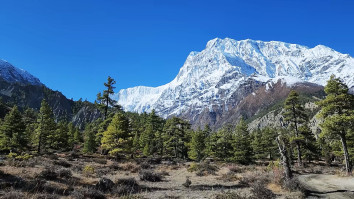 Discover Chame Village, a scenic gateway to the Annapurna Circuit and Himalayan treks like Tilicho Lake and Nar Phu Valley. Learn about its culture, location, attractions, and trekking routes.
Discover Chame Village, a scenic gateway to the Annapurna Circuit and Himalayan treks like Tilicho Lake and Nar Phu Valley. Learn about its culture, location, attractions, and trekking routes.
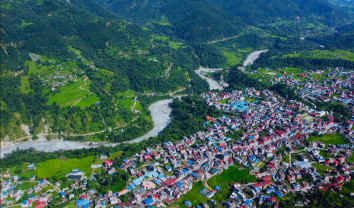 Explore Besisahar, the gateway to the Annapurna Circuit in Nepal. Discover scenic landscapes, local culture, trekking routes, and travel tips for your Himalayan adventure.
Explore Besisahar, the gateway to the Annapurna Circuit in Nepal. Discover scenic landscapes, local culture, trekking routes, and travel tips for your Himalayan adventure.
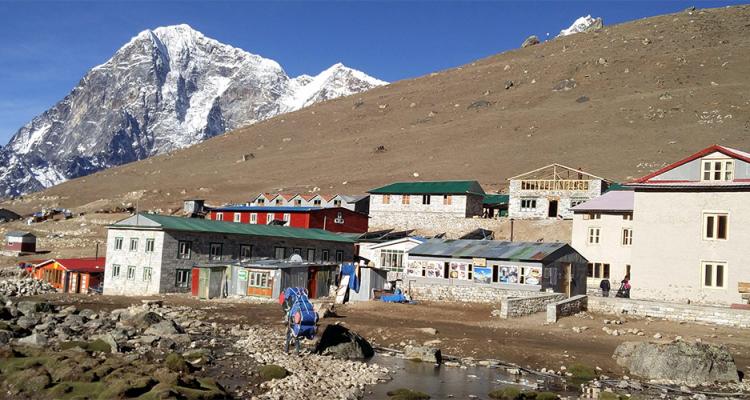 Lobuche Village Nepal: know the weather, location, tea houses, restaurants, altitude, near by location of Lobuche, all info you need to know about
Lobuche Village Nepal: know the weather, location, tea houses, restaurants, altitude, near by location of Lobuche, all info you need to know about
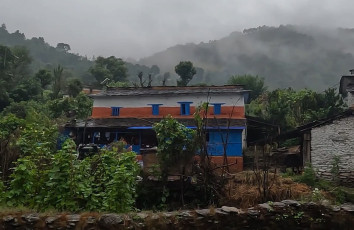 Discover Tilije Village, a serene stop on the Manaslu Circuit Trek in Nepal. Surrounded by mountains and Tibetan culture, it's the perfect place to rest, explore, and experience authentic Himalayan hospitality.
Discover Tilije Village, a serene stop on the Manaslu Circuit Trek in Nepal. Surrounded by mountains and Tibetan culture, it's the perfect place to rest, explore, and experience authentic Himalayan hospitality.
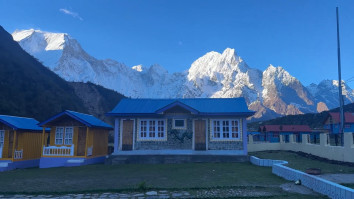 Discover Bhimtang Village, a scenic stop on the Manaslu Circuit Trek. Surrounded by glaciers and alpine beauty, it offers cozy lodges, mountain views, and cultural charm at 3,720 meters.
Discover Bhimtang Village, a scenic stop on the Manaslu Circuit Trek. Surrounded by glaciers and alpine beauty, it offers cozy lodges, mountain views, and cultural charm at 3,720 meters.
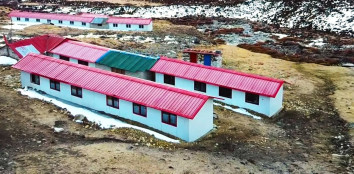 Discover Dharamshala in Nepal, a peaceful rest and acclimatization stop on the Manaslu Circuit Trek. Enjoy stunning mountain views, cozy lodges, and prepare for the challenging Larkya La Pass ahead.
Discover Dharamshala in Nepal, a peaceful rest and acclimatization stop on the Manaslu Circuit Trek. Enjoy stunning mountain views, cozy lodges, and prepare for the challenging Larkya La Pass ahead.
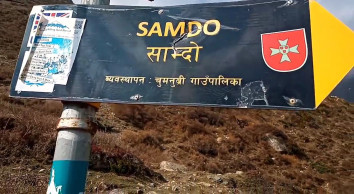 Discover Samdo Village, a remote Himalayan settlement near the Tibetan border. Explore its unique Tibetan culture, scenic landscapes, and its role as the last stop before crossing Larkya La Pass on the Manaslu Circuit Trek.
Discover Samdo Village, a remote Himalayan settlement near the Tibetan border. Explore its unique Tibetan culture, scenic landscapes, and its role as the last stop before crossing Larkya La Pass on the Manaslu Circuit Trek.
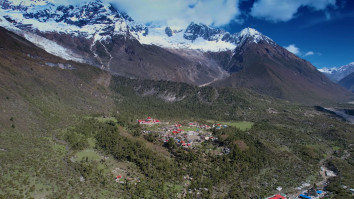 Discover Samagaun Village in Nepal, a scenic stop on the Manaslu Circuit Trek known for its Tibetan culture, mountain views, and peaceful Himalayan charm.
Discover Samagaun Village in Nepal, a scenic stop on the Manaslu Circuit Trek known for its Tibetan culture, mountain views, and peaceful Himalayan charm.
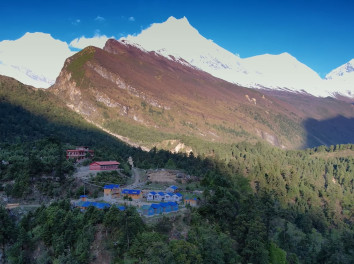 Explore Shyala Village on the Manaslu Trek and enjoy stunning views and rich culture. Plan your Himalayan adventure now!
Explore Shyala Village on the Manaslu Trek and enjoy stunning views and rich culture. Plan your Himalayan adventure now!
All contents Within this website is copyright Protected © 2025 | Adventure Vision Treks and Travels Pvt. Ltd.